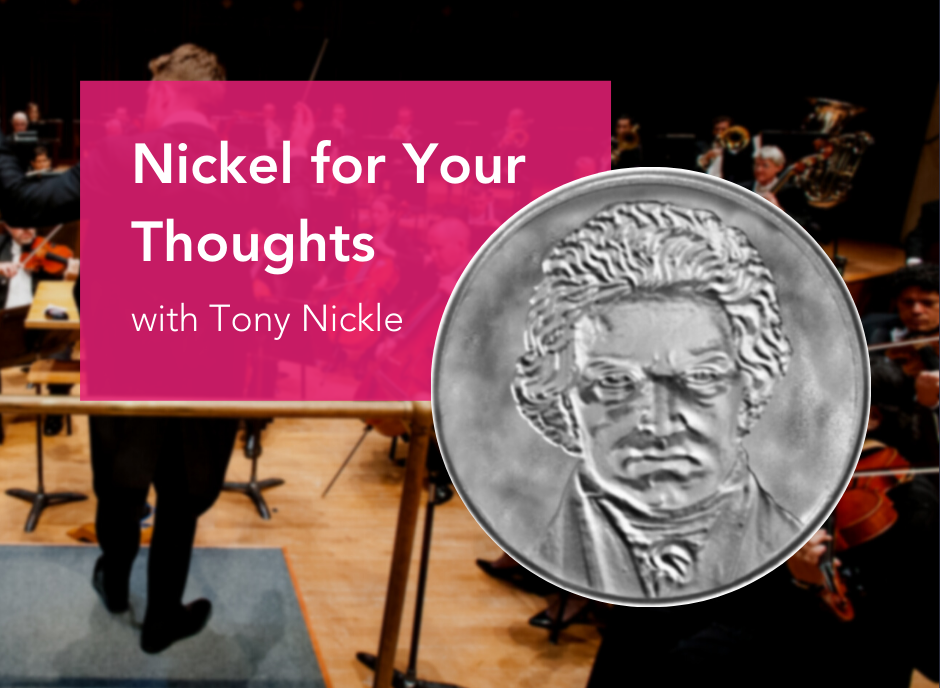In his own words, Vice President & Artistic Administrator Tony Nickle shares what he believes to be the high points of the program, but with a little edge and humor for good measure.
As a Northerner I can only enjoy 90 degrees and humid for so long every year, which is why November is always one of my favorite months in Northeast Florida. The evenings have just enough chill to layer clothing, keep a blanket within reach on the sofa, or pop a robust Bordeaux. It’s a perfect setting for this weekend’s program, which is loaded with lush and gorgeous 19th-century music that is the aural equivalent of a velvet blanket.
Before diving into the music itself, I have to take a moment to say how excited I am for our guest conductor this week. Jonathon Heyward, originally from Georgia (and originally a cellist) has packed many high-profile conducting engagements into his young career, including the London Symphony, several BBC symphonies, Seattle, and Detroit; and in addition to Jacksonville, has debuts this season with Atlanta, Baltimore, Oregon, and San Diego. His star is rising very quickly and seeing him lead the Symphony this weekend may give you an opportunity years from now to say, “I saw him before he was a household name.”
We open with one of my favorite composers, Richard Wagner. Actually, I’ll amend that to say Wagner’s music is among my favorite; in life he was actually a pretty lousy human being, but he did leave us with work after work that changed the course of Western Music. He worked almost entirely in opera, creating one innovation after the next in so many aspects: size of the orchestra, scale of productions, even being the first to consistently demand that the house lights be extinguished during productions so people wouldn’t pay attention to anything other than the music and drama. But one of his most significant and lasting legacies is his innovation of compositional devices that more deeply mirrored the musical development and structure with the dramatic narrative on stage. It was something he was turned on to from reading the German philosopher Arthur Schopenhauer while in exile for being a political radical. One of his most significant tools for this was the leitmotif (lead motive), which is essentially introducing a musical idea – which may only be a couple of notes or as much as a mini-theme – and connecting that with a character, object, or concept, e.g., a spear, love, or greed.
The Flying Dutchman was Wagner’s first opera employing this approach to music and drama, and we immediately hear the stark change from his previous operas in the Overture. The strings and winds plunge from the first downbeat into sounds of the North wind and crashing waves of the sea, setting the stage for this story about a man whose soul was cursed and exiled from the world, being forced to sail on his ghostly ship for eternity. His only hope for release from this curse is genuine and unconditional love, and he is only allowed the opportunity to visit the land of the living every seven years to search for this redemption. The Overture captures this concept magnificently in just a little more than ten minutes. It’s filled with storm and conflict, and at the end we hear the darkness part and give way to the Redemption leitmotif, heard at the very end of the opera as the Dutchman’s love, Senta, throws herself into the sea in a gesture of love and sacrifice, finally redeeming the cursed sailor.
The anchor for this weekend is Piotr Ilyich Tchaikovsky’s grand Fifth Symphony. It may seem cliché or pandering to compare it with Beethoven’s Fifth, but for me the gravitational pull can’t be ignored. Like Beethoven, this symphony is a journey from a fatalistic sounding first movement to glorious triumph in the last. And, like Beethoven, Tchaikovsky introduces a motif in the first movement (listen for its debut in the clarinets right near the beginning) that appears again in each movement, transformed each time until it emerges in majestic sunlight at the very end. It’s hard to imagine that Wagner’s model of leitmotivic development wasn’t influential for Tchaikovsky as well. The arc from dark to light is nearly the opposite of Tchaikovsky’s Sixth and final symphony, which ends in melancholy reflective of the composer’s final days.
Of the many stunning moments in this massive work, perhaps the most touching for me is the French horn solo at the beginning of the slow second movement. Principal horn Kevin Reid is one of the finest horn players I’ve heard, and this is certain to be a moment where time almost stands still.
Please join us for this weekend of music filled with warmth, beauty, and optimism. I’ll be watching in the house for people subtly pulling out their Kleenex.
Learn more about the Tchaikovsky’s Fifth Symphony performances here.
By Tony Nickle, Vice President & Artistic Administrator


